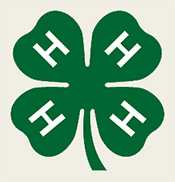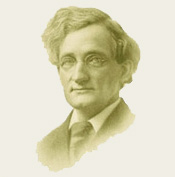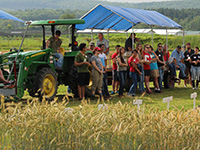Adapt these activities to the age, interest, and skill levels of your group.
Grow a Gourd Birdhouse (pdf)
Shekere Shaker(pdf)
Gourd Painting(pdf)
Connections to NYS Learning Standards
Gourd crafting may be the perfect way for you to get creative while still connecting with the fruits of your garden harvest! Over the centuries, gourds have been adapted from simple utilitarian use to incredible works of art. As a result, gourd crafting has become important to cultures around the world especially in South America and Africa, and increasingly as a popular hobby in North America.
Gourds provide a 3-dimensional canvas that is very versatile in its shape, size, and use. You can cut, carve, paint, and embellish them with natural materials such as stone, feathers, plants, etc. The end result can be both functional and ornamental. There is a saying in the gourd craft world that “if the artist can ‘think it’, then the gourd can ‘be it’!”
A Little Gourd History
Regarded as the first plant ever to be domesticated by humans, gourds have been grown and used around for the world for thousands of years. Evidence from African art, Egyptian tombs, and Mexican caves reveal that gourds have been cultivated for many thousands of years. They were originally used in dried form as containers before clay and stone pottery, and thus have been referred to as “nature’s pottery”. They have been used as storage containers, water vessels, resonating chambers for musical instruments such as drums, shakers, and horns, pipes, masks, bath sponges for religious rituals, as tools, bowls, mugs for sipping yerba mate in South America, birdhouses in the southern USA for purple martins, and more! Although humans, no doubt, helped to disperse gourd seeds as they traveled, the gourd’s ability to float across great expanses of water probably helped them make their way to new regions of the world.
Did You Know…
- Gourd skins were used to replace missing parts of skulls back in the Neolithic times as part of primitive surgery.
- White gourd juice is a common beverage retailed in China. It has a unique smoky taste!
- The standard coin in Haiti is called the “gourde” – this is because back in 1807, gourds were one of the most useful items in peasant life and so the governor of Haiti collected thousands of gourds as the country’s “treasury”.
- Many people used gourds as medicine to cure coughs and as an antidote for certain poisons. The juice was used to prevent balding and to cure jaundice. An infusion of seeds was used to cure chills and headaches.
- Squash shells were used in Peru to record events.
- A small gourd, called “Hu Lu” in Mandarin, was one of the essential items used during the Chinese New Year. It was usually wrapped in red paper ribbon that signified luck and prosperity and was made as a ceremonial offering to the gods.
- In Africa large gourds were used as cradles and baby baths.
- Sherlock Holmes’ famous calabash pipe, like many native pipes, was fashioned from the neck of a gourd.
- In India, gourds were used as floating buoys to teach children how to swim.
- Traditionally, East Africans gave gourds as wedding gifts. They usually had stories carved on them that illustrated people, places, things, and events relevant to the person receiving the gift.
Gourd Project Ideas
Bowls, baskets, colanders, ladles, plant holders, teapots, candle holders, lamps, napkin holders, wreaths, birdhouses, ornamental flowers, animals, drums, rattles, rain sticks, and more.
Gourd Crafting Methods
There are many different techniques involved in gourd crafting including sanding, carving, burning, dyeing, decorating, and polishing. Here’s a brief overview of each technique:
- Sanding: Sanding gourds help to create a smooth and consistent texture and color. Make sure to use extra fine sandpaper, so as not to scratch the surface.
- Carving: Gourds can be carved with regular woodworking tools, but they are softwood, so be careful because not much pressure is needed to make a cut.
- Burning: Pyrography is the art of burning designs into wood with heated tools. Use a wood-burning tool with different sized points at the end to make larger or smaller burns. It’s a good idea to pencil out your design ahead of time, so that you know exactly where and how much area you are going to burn.
- Dyeing and Painting: You can color your gourd craft with dyes, paints, stains, waxes, and metallic leafing. Make sure that the gourd is completely dry before painting to prevent molding. Before painting, fill holes with wood filler and sand it smooth. It is best to sand all over the gourd with an extra fine sandpaper to ensure a smooth surface for painting. Use acrylic or oil paints.
- Decorating: Decorate and embellish your gourd crafts with natural and found materials such as stones, feathers, and plants.
- Polishing: When you are done creating your gourd craft, you can use regular craft polish to cover your gourd and give it a smooth, shiny finish.
Gourd Crafting Materials
- Lagenaria (hard-shelled) gourds. These are the best kind for crafting — they are dry, hard, durable, and waterproof!
- Wood saw
- Key-hole drill
- Sanding tools
- Polishing tools
- Carving tools
- Dyeing and painting tools
- Burning tools
Connections to NYS Learning Standards
Activity: GROW A GOURD BIRDHOUSE
Health, Physical Education, and Home Economics
STANDARD 2 Students acquire knowledge and ability necessary to maintain a healthy environment. Students evaluate products for selection and use.
STANDARD 3 Students understand and manage personal and community resources. Students make bird feeders.
Mathematics, Science and Technology
STANDARD 1 Students use mathematical analysis, scientific inquiry, and engineering design to pose questions and develop solutions. Design and model a birdhouse.
STANDARD 2 Students access, generate, process and transfer information using technologies.
STANDARD 3 Students understand math and become mathematically confident by communication and reasoning. Measurement skills
STANDARD 4 Students understand and apply scientific concept, principles, and theories. Students grow, harvest, and craft gourds.
STANDARD 5 Students apply technological knowledge and skills to design, construct, use, and evaluate products and systems to satisfy human and environmental needs. Engineering design is an iterative process involving modeling and optimization used to develop technological solutions.
STANDARD 6 Students understand and apply relationships and common themes that connect math, science, and technology.
STANDARD 7 Students apply knowledge and skills of math, science, and technology to address problems. Evident when students improve a habitat for birds.
English Language Arts
STANDARD 1 Students listen, speak, read, and write for information and understanding. Students collect data, facts, and ideas, discovering relationships, concepts, and generalizations, and using knowledge from oral, written, and electronic sources. Online resources.
The Arts
STANDARD 2 Students make use of materials and resources for participation in the arts. Students decorate gourds using a wood burning tool.
STANDARD 3 Students will analyze visual characteristics of the natural environment and explain social, cultural, psychological, and environmental dimensions of the visual arts. Students respond critically to variety of works in the arts.
STANDARD 4 Students understand personal and cultural forces that shape artistic communications. Students explore concept of art made with nature.
Activity: MAKE A SHEKERE SHAKER
Health, Physical Education, and Home Economics
STANDARD 2 Students acquire knowledge and ability necessary to maintain a healthy environment. Students evaluate products for selection and use.
STANDARD 3 Students understand and manage personal and community resources. Students grow musical instruments.
Mathematics, Science and Technology
STANDARD 1 Students use mathematical analysis, scientific inquiry, and engineering design to pose questions and develop solutions. Students make musical instruments.
STANDARD 2 Students access, generate, process and transfer information using technologies.
STANDARD 3 Students understand math and become mathematically confident by communication and reasoning. Look at recurring patterns and functions.
STANDARD 4 Students understand and apply scientific concept, principles, and theories. Students learn about the natural resonating chambers of gourds as musical instruments.
STANDARD 5 Students apply technological knowledge and skills to design, construct, use, and evaluate products and systems to satisfy human and environmental needs. Engineering design is an iterative process involving modeling and optimization used to develop technological solutions.
STANDARD 6 Students understand and apply relationships and common themes that connect math, science, and technology.
STANDARD 7 Students apply knowledge and skills of math, science, and technology to address problems. Evident when students experiment with different shapes and sizes of gourds.
English Language Arts
STANDARD 1 Students listen, speak, read, and write for information and understanding. Students collect data, facts, and ideas, discovering relationships, concepts, and generalizations, and using knowledge from oral, written, and electronic sources. Online resources and books.
The Arts
STANDARD 1 Students will actively engage in processes that constitute creation and performance. Students play instruments they made.
STANDARD 2 Students make use of materials and resources for participation in the arts. Students thread beads onto strings to make rhythmic sounds as they strike gourds.
STANDARD 3 Students will demonstrate the capacity to listen to and comment on music. They will use concepts from other disciplines to enhance their understanding of music.
Students will analyze visual characteristics of the natural environment and explain social, cultural, psychological, and environmental dimensions.
STANDARD 4 Students understand personal and cultural forces that shape artistic communications. Students explore concept of art made with nature.
Social Studies
STANDARD 2 Students in their study of world history can explain some practices as found in particular civilizations and cultures such as traditions, language and literature. Students learn how the Yoruba people of Nigeria add natural beads & shells to netting to a gourd when they make a music shaker called the shekere. These instruments are popular in cultures around the globe
Activity: PAINTING
English Language Arts
STANDARD 1 Students listen, speak, read, and write for information and understanding. Students collect data, facts, and ideas, discovering relationships, concepts, and generalizations, and using knowledge from oral, written, and electronic sources. Online resources.
The Arts
STANDARD 2 Students make use of materials and resources for participation in the arts. Explore painting as a technique to decorate gourds.
STANDARD 3 Students will analyze visual characteristics of the natural environment and explain social, cultural, psychological, and environmental dimensions of the visual arts. Students respond critically to variety of works in the arts.
STANDARD 4 Students understand personal and cultural forces that shape artistic communications. Students explore concept of art made with nature.
top









